According to Tad Steinberg, speaking during the 2024 AMUG Conference, Siemens Energy has made significant progress with additive manufacturing-enabled hydrogen combustion and gas turbines.
Steinberg, an Air Force veteran based in Siemens Energy’s additive manufacturing application center in Orlando, Florida, has extensive experience in aerospace, industrial gas turbines, and metal additive manufacturing.
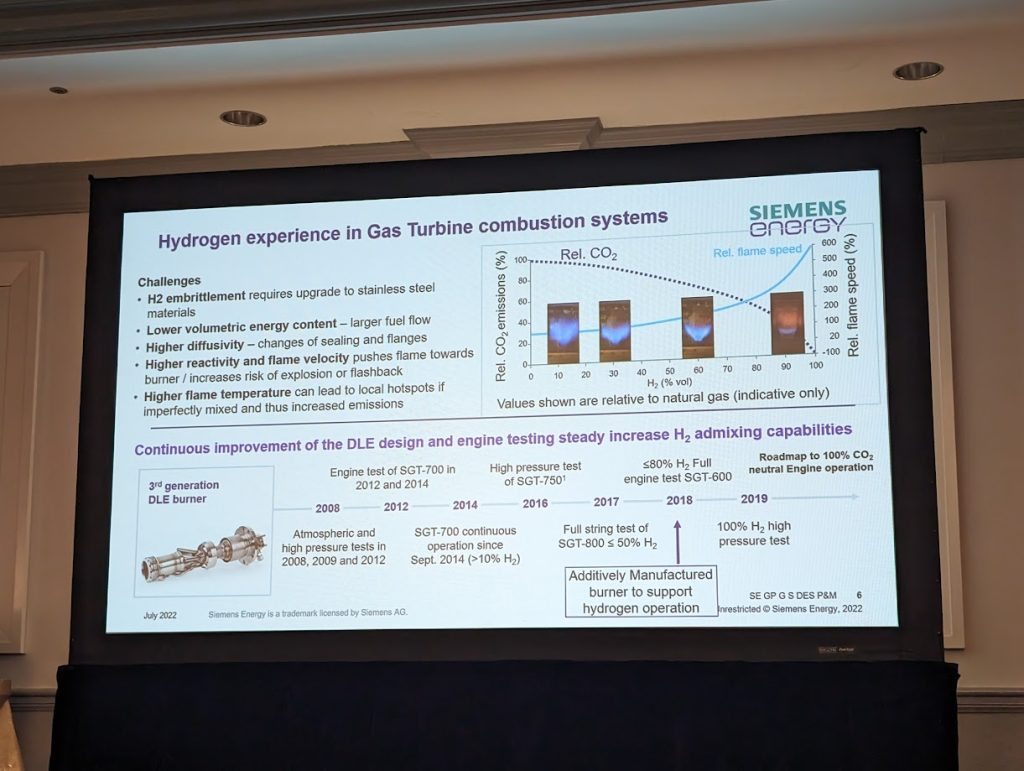
Hydrogen combustion and gas turbines in the additive manufacturing space
Steinberg explained Siemens Energy’s intent that by 2030, every new gas turbine they sell will have the capability to run on 100% hydrogen, a significant shift from their traditional focus on natural gas and methane. This is an ambitious goal highlighting the company’s dedication to innovation in the energy sector, despite uncertainties about customer adoption.
A crucial aspect of this transition is Siemens Energy’s utilization of additive manufacturing, which has played a pivotal role in overcoming the challenges posed by hydrogen. The company, both a user and a service provider in the additive manufacturing space, has been leveraging this technology since 2008. Steinberg underscored its importance, saying, “Additive has really helped us accelerate getting into that [hydrogen] space because of the challenges that hydrogen brings to the table.”
Discussing Siemens Energy’s broader activity in the hydrogen process, Steinberg noted the company’s involvement in the entire value chain, from hydrogen production using electrolyzers to storage and transmission. “Siemens Energy is very engaged in the entire hydrogen process,” he remarked, emphasizing their approach to adopting hydrogen as a viable fuel source.
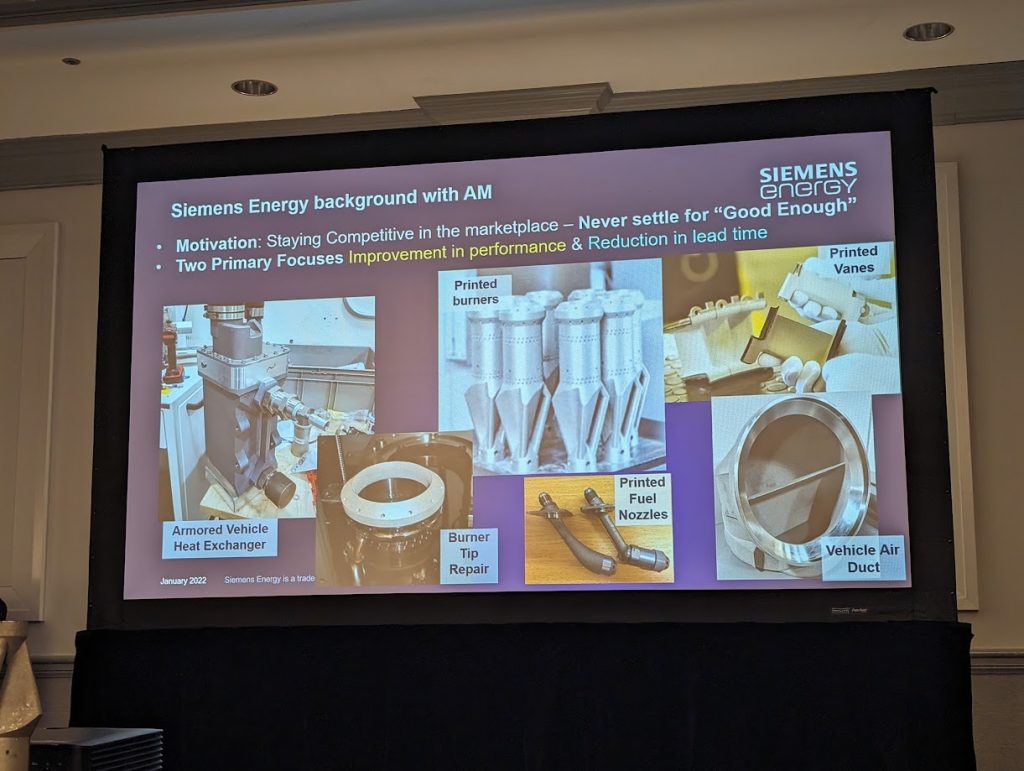
Modifying a gas turbine burner for hydrogen combustion
The presentation detailed some of the complex challenges that hydrogen combustion poses for gas turbines and how additive manufacturing has been a pivotal tool in addressing these challenges. Steinberg highlighted the specific difficulties encountered when transitioning from natural gas to hydrogen, focusing on the substantial differences in flame behavior and fuel system requirements.
One of the primary challenges Steinberg identified was the significantly faster flame speed of hydrogen compared to natural gas. He explained, “the flame speed [with hydrogen] is so fast and very close to the outlet of the burner,” which necessitates adjustments in the burner design to prevent issues such as flashback. The increased flame speed is ten times faster than that of natural gas, posing a unique set of challenges.
Additionally, hydrogen combustion requires a higher volume of fuel to achieve the same power density, further complicating the transition. Steinberg pointed out that components such as sealing and piping that work with natural gas might not be suitable for hydrogen due to these differences. He said, “You have to flow a lot more to get the same power density.”
The role of additive manufacturing in Siemens Energy’s approach to these challenges has been vital. Additive manufacturing has allowed for rapid prototyping, enabling the company to swiftly iterate and test new designs to meet the unique demands of hydrogen combustion. “Additive is just one lever to pull to be able to help address those,” Steinberg noted, underscoring its importance in the developmental process. Highlighting one specific achievement, Steinberg mentioned the SGT 600 gas turbine, which has successfully run on 100% hydrogen in their workshop.
Steinberg also outlined Siemens Energy’s progressive approach using additive manufacturing since 2008, detailing how the company’s focus on hydrogen has evolved over time. From initial tests with low hydrogen percentages in 2012 to more substantial advancements in recent years, Siemens has steadily increased the hydrogen capability of its burners. By 2018, the company had made significant strides, integrating additive manufacturing into its development cycle for rapid prototyping and testing.
Emphasizing the scale of the challenge, Steinberg reiterated the goal of achieving 100% hydrogen capability by 2030. “100% is a big number. It’s a big challenge,” he admitted.
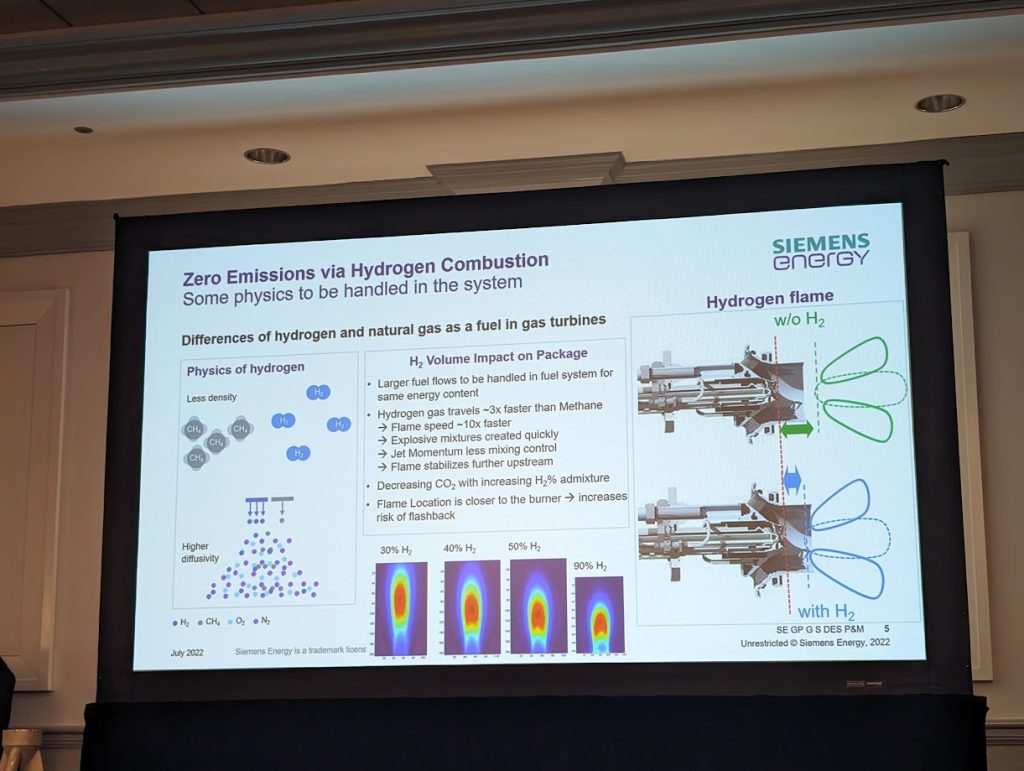
3D printing burners for gas turbines
Steinberg outlined a phased approach to modifying gas turbines for increasing levels of hydrogen usage, highlighting the necessary changes in the turbine’s architecture and control systems as hydrogen concentration increases.
He discussed the need for a comprehensive transformation of the turbine’s components and control mechanisms, especially beyond a 70% hydrogen concentration. Steinberg explained, “Past 30%, up to about 70%, you’re going to have to start changing things,” indicating a significant redesign of the turbine system for higher hydrogen utilization. As hydrogen usage approaches 100%, he notes that “pretty much the whole package has to change,” including control and safety architectures.
A critical focus of the presentation was the importance of additive manufacturing in developing these new turbine components. Steinberg highlighted AM’s role in rapidly prototyping and iterating burner designs for the hydrogen adaptation process. The use of additive manufacturing not only speeds up the prototyping process but also assists in addressing operational issues such as erosion and oxidation at the burner tips.
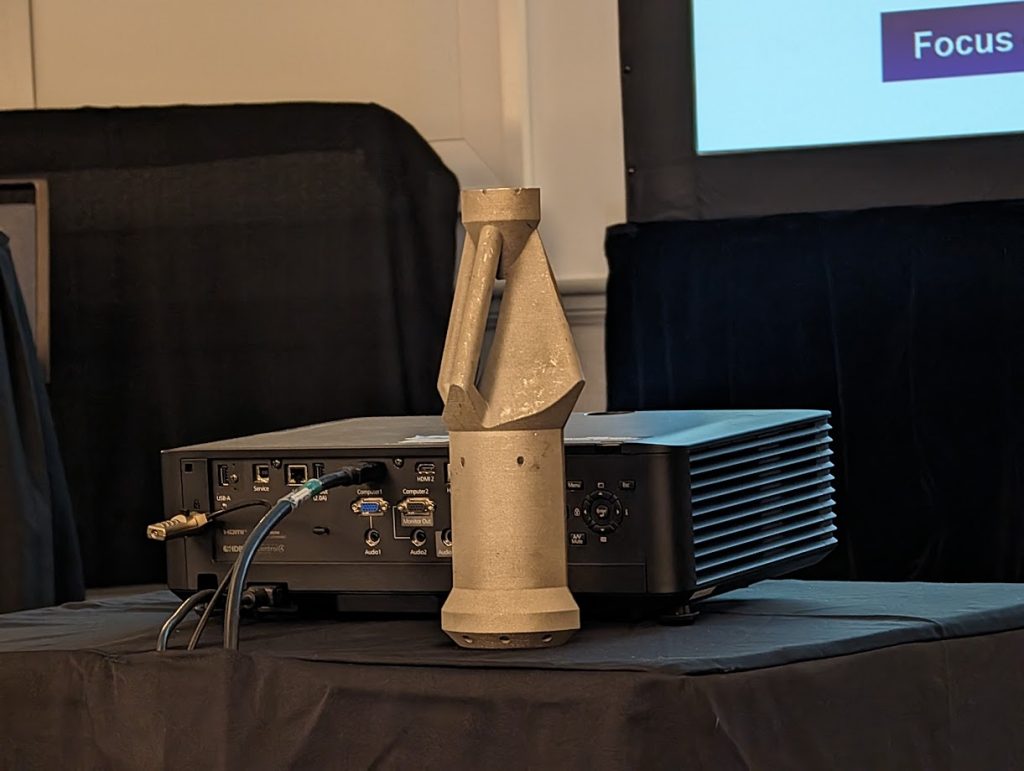
Selecting a common burner across different gas turbine models for modification was a strategic move. By choosing a burner used in several models – the SGT 600, 700, 900, and 750 – Siemens Energy aimed to maximize the impact of their innovations, whether the burner is in a can or annular combustion system. Further, Steinberg underscored the dual benefits of their approach: addressing both hydrogen combustion challenges and operational efficiency. He remarked, “We can solve both,” pointing out how Siemens Energy’s innovations in hydrogen adaptation also contribute to solving wear and tear issues common in gas turbines.
The session included detailed insights into the development cycle, from computational fluid dynamics (CFD) simulations to real-world testing, emphasizing the rapid iteration and testing capabilities afforded by additive manufacturing. Steinberg mentioned a specific study published in Gas Turbine World, detailing Siemens Energy’s advancements in this area.
A key point of Steinberg’s presentation was the economic analysis of using additive manufacturing for gas turbine components. While acknowledging the higher initial cost of additively manufactured parts, he highlighted the long-term savings and efficiency gains. “The additive burner is still more expensive,” he admitted but countered this by emphasizing the reduced need for inventory, which translates to lower costs in inventory management and taxation. Steinberg also pointed out the elimination of quality issues related to sub-suppliers, stressing, “All that’s gone. So what’s that worth to you?”
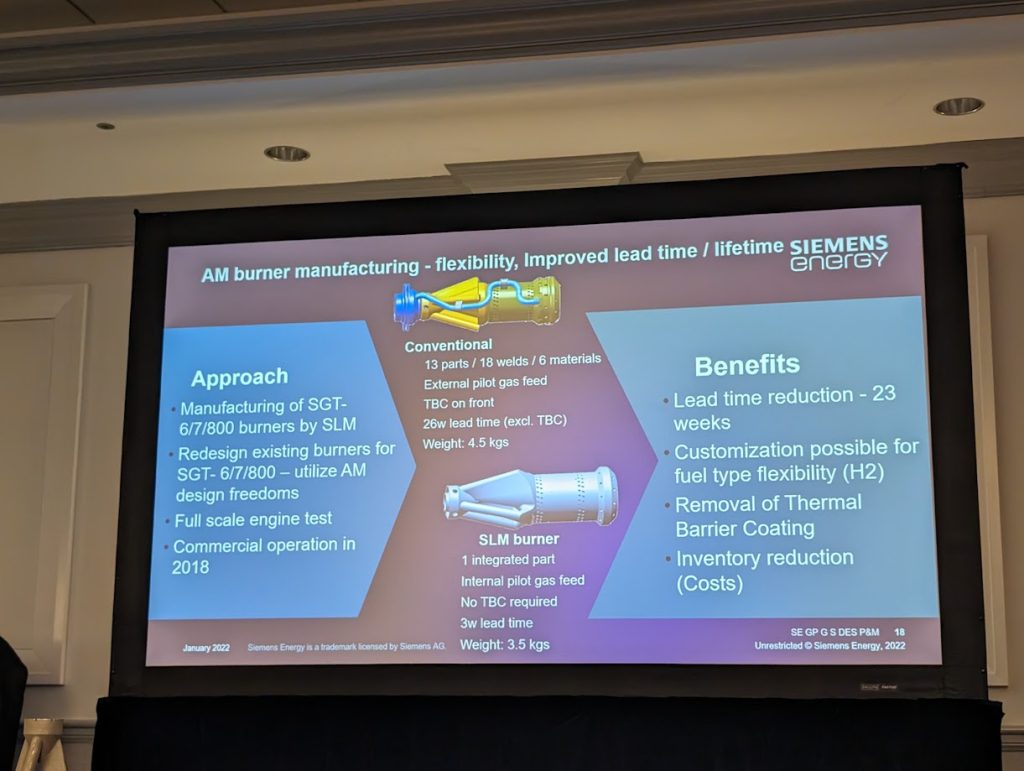
Repairing burners with additive manufacturing
Steinberg detailed a novel approach to extending the life of burners through additive manufacturing. Traditionally, repairing burners involved cutting off a portion of the component and attaching a new segment. However, Siemens Energy has innovated by 3D printing directly onto the existing burner, significantly enhancing longevity. He elaborated, “We integrated a heat exchanger into the tip of the burner. Now we’re past 50,000 hours,” compared to the standard 10,000-hour lifespan.
This advancement in durability, while beneficial, also posed a unique challenge. The extended lifespan of the parts meant that the cost-benefit analysis based on a 10,000-hour replacement cycle was no longer applicable. Steinberg reflected on this paradox, saying, “It’s never one or the other. You have to balance them both.”
Additionally, Steinberg shared insights into the iterative process of developing these burners, noting the significant investment and effort involved. He mentioned a symbolic ‘burner throne,’ made from scrapped prototypes, representing the extensive work and resources put into perfecting the burners, whether for hydrogen adaptation or other purposes.
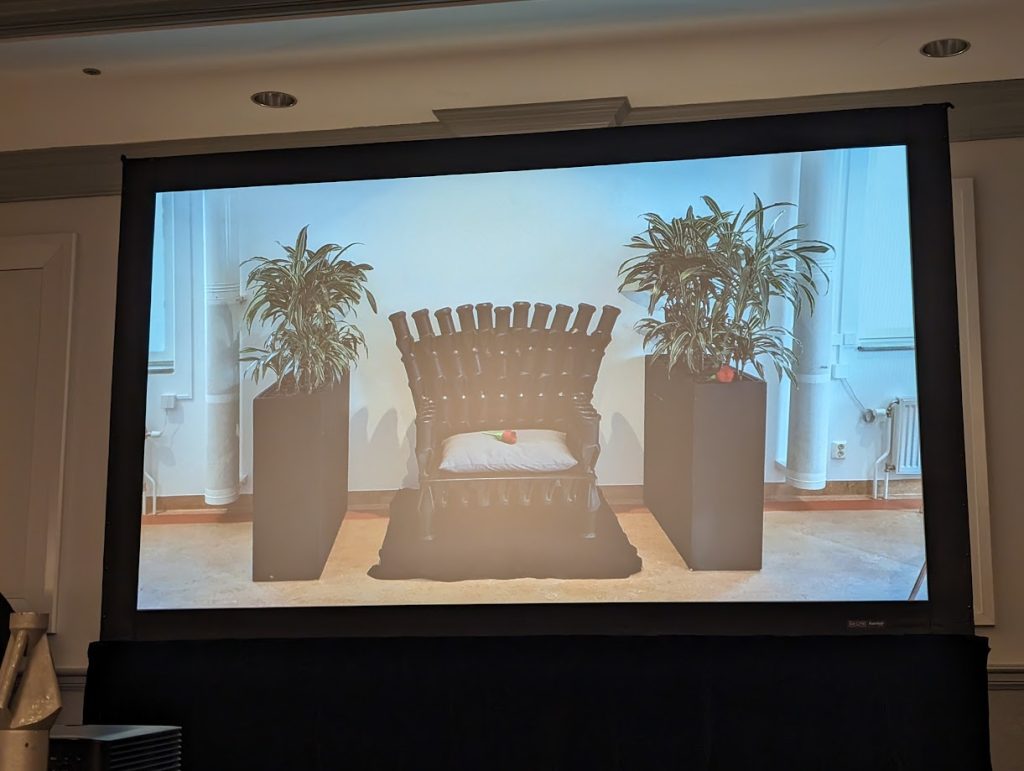
3D printing for energy applications in the real-world
In his presentation, Ted Steinberg of Siemens Energy discussed the practical application of their technology in a real-world scenario, specifically highlighting a project with Braskem in Brazil. The focus was on utilizing hydrogen in gas turbines for a continuous process plant where off-gases, primarily hydrogen, are recycled and burned through the turbines.
Steinberg used this as an example of the flexibility and robustness of Siemens Energy’s hydrogen-adapted gas turbines. Designed for a hydrogen concentration of 50 to 65%, the turbines at Braskem unexpectedly had to operate with hydrogen levels fluctuating from 40% up to around 90%. Steinberg remarked, “It wasn’t designed for it, but that’s what they’re feeding, and it’s working quite well.” This observation underscores the adaptability of Siemens Energy’s technology in varying operational conditions.
In discussing the broader impact of their innovations, Steinberg noted, “All of the gas turbines that run this amount of hydrogen are all additively manufactured and in use in customer power plants.” He indicated the success of these implementations, saying, “We’ve done this once, we’ve done several times, and customers are still happy.”
The session concluded with Steinberg acknowledging the challenges of pricing in additive manufacturing. He highlighted the often-overlooked costs of infrastructure and investment necessary in this technology, a point of frustration in commercialization efforts. “It’s all of those costs that actually have to roll into the price of the product,” he explained, shedding light on the complex economic dynamics of adopting advanced manufacturing techniques in the energy sector.
Steinberg’s presentation at the 2024 AMUG Conference was an in-depth look at Siemens Energy’s commitment to innovative solutions in the energy sector, particularly in adapting to the use of hydrogen as a fuel source in gas turbines. The successful application of their technology in varying operational scenarios and their attention to the economic aspects of production demonstrate the company’s forward-thinking approach in this evolving industry.
What 3D printing trends do the industry leaders anticipate this year?
What does the Future of 3D printing hold for the next 10 years?
To stay up to date with the latest 3D printing news, don’t forget to subscribe to the 3D Printing Industry newsletter or follow us on Twitter, or like our page on Facebook.
While you’re here, why not subscribe to our Youtube channel? Featuring discussion, debriefs, video shorts, and webinar replays.
Featured image shows Tad Steinberg Siemens Energy. Photo by Michael Petch.


